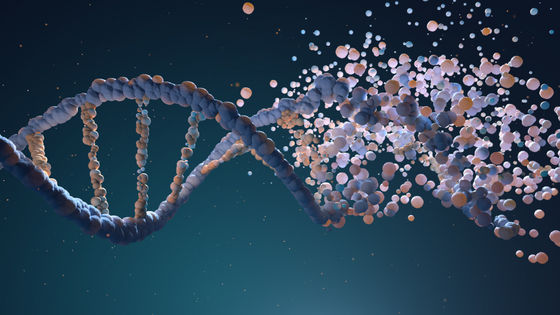The length of life may be determined by ``gene length''

A study using artificial intelligence to analyze various body tissue data collected from humans, mice, rats, and medaka fish found that most of the molecular-level changes that occur during the aging process can be explained by gene length. . It is hoped that this discovery could lead to the development of treatments that slow or reverse aging.
Aging is associated with a systemic length-associated transcriptome imbalance | Nature Aging
Aging is driven by unbalanced genes - Northwestern Now
https://news.northwestern.edu/stories/2022/12/aging-is-driven-by-unbalanced-genes/
This time, the research team of Thomas Stoger and others at Northwestern University, who reported on a study that approaches the mechanism of aging, first collected and analyzed samples from mice at 4 months, 9 months, 12 months, 18 months, and 24 months of age. I put it on. As a result, it was found that there was already a change in the median gene length between the 4-month-old and 9-month-old samples. This means that changes in gene length that lead to aging occur very early.
When the research team further examined rats aged 6 months to 24 months and medaka samples aged 5 weeks to 29 weeks, it was confirmed that the changes found in mice become more pronounced as they age. I was. Regarding this, Mr. Stoger said, ``Our cells can cope with imbalances in gene activity when they are young, but it seems that at some point they can no longer do so.''

The research team, who found that aging is related to gene length in animal experiments, next focused on human aging. Then, when we examined changes in genes in humans aged 30-49, 50-69, and over 70, we found that changes in gene activity according to gene length occurred in middle age. rice field.
According to the research team, the mice that analyzed the genes were cloned mice with the same DNA, and the subjects were of different ages and genders, compared to the same sex and the same laboratory where they were raised, so the data are more effective. is said to be high. Human analysis also showed consistent patterns of aging genes.
In this discovery, we found that gene length is related to aging, but this does not mean that the longer the gene, the better. In the first place, the length of a gene is based on the number of

Unlike the common biological approach of finding specific genes associated with aging, this gene-wide study offers an entirely new perspective on genetics, revealing a wide range of aging-associated diseases such as neurodegenerative diseases. Mr. Stoger positions that it may also help clarify the problem.
For example, the study could help explain why injuries heal more slowly and illnesses last longer as we age. In other words, older cells have to deal with genetic imbalances as well as external damage, which slows their recovery.
The research team of Mr. Stoger and others hopes that this discovery may lead to the development of therapeutic agents that delay or reverse aging. This is because current treatments for various diseases associated with aging are symptomatic in a sense, and cannot target the underlying cause, aging itself.
'Fever, for example, has many causes,' said study co-author Luis Amaral. 'An infection requires antibiotics. Appendicitis requires surgery. Similarly, an imbalance in gene activity. If we can fix the root of the problem, we will be able to deal with various problems downstream.'
Related Posts:
in Science, Posted by log1l_ks







